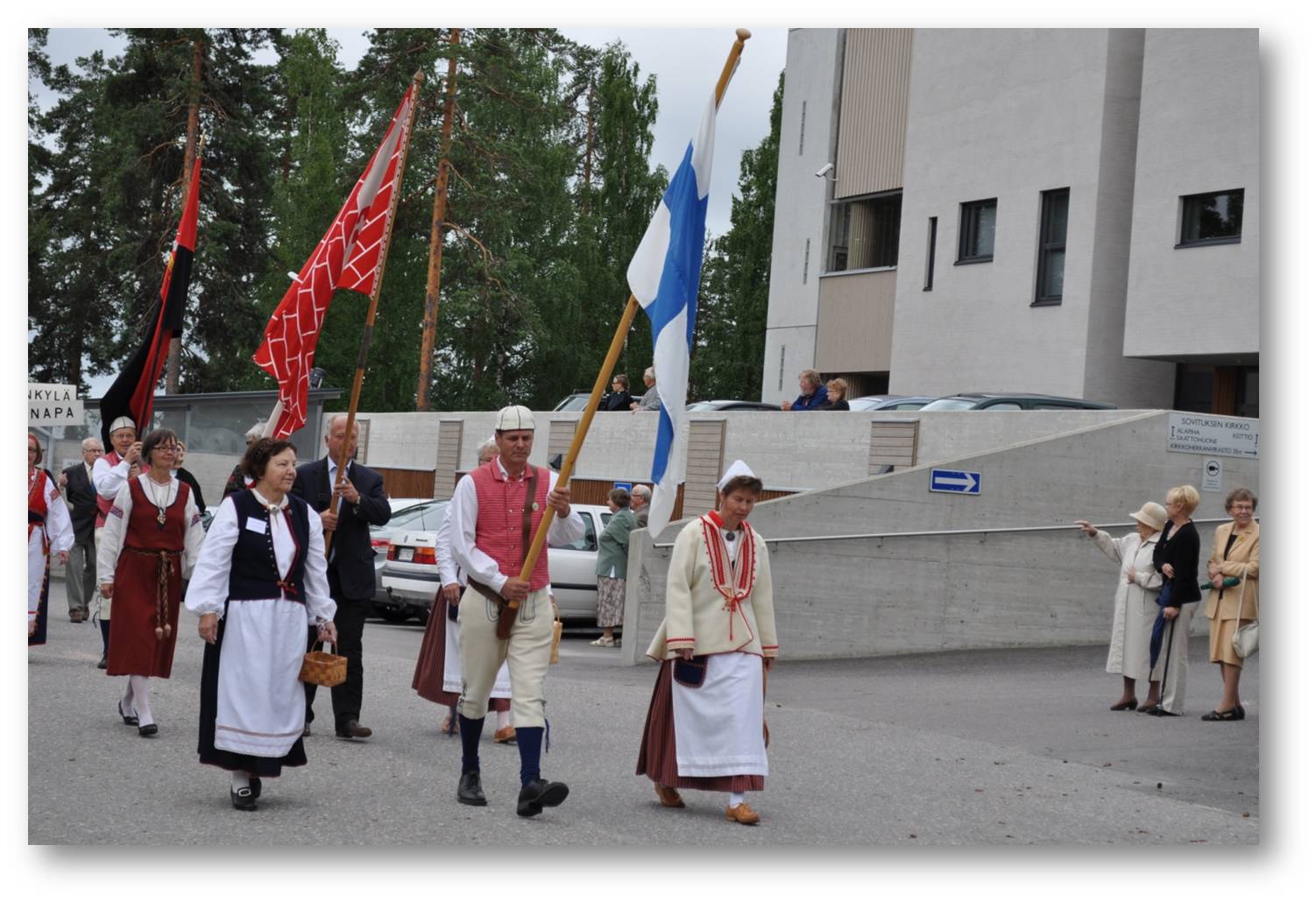The Kalevala and the European Heritage Label
The Kalevala represents Karelian and Finnish cultural heritage, which is constantly changing and open to a variety of interpretations.
The European Heritage Label aims at promoting the knowledge of the common, and yet diverse, cultural heritage that is shared by the people in Europe. For us, it gives the opportunity to deepen the knowledge about the Kalevala and its background in the European context, and to motivate young people to reflect upon their cultural heritage and its role in the formation of their identity.
With the help of the European Heritage Label, it would also be possible to increase the knowledge of the now endangered Karelian language and the diversity of the Karelian culture among people in Finland.
The application will be sent to the European Commission in the beginning of 2023 and the decision about the label will be made in spring 2024.
Read more about the project at https://kalevalaseura.fi/en/the-kalevala-and-the-european-heritage-label/
The Kalevala represents Karelian and Finnish cultural heritage

Introduction of the Finnish Karelian League
Background
At the end of the Second World War, Finland was obliged to cede to the Soviet Union most of Finnish Karelia, which had been home to the Karelians and many other Finno-Ugrian communities for centuries. Throughout recorded history, Karelia had been under the rule of either Sweden (Finland) or Russia (Novgorod), although its inhabitants were almost exclusively Finno-Ugrians. Peace treaties signed in 1617 and 1920, however, clearly stated that Finnish Karelia belonged to Finland.
Practically the whole population from the territories ceded after the war relocated to unoccupied Finland, and 400,000 of the evacuated Karelians were resettled in other parts of the country. Finland was also required to pay the Soviet Union heavy war reparations, and did so. Although Finland lost Karelia and other border areas, it retained its independence.
What is the Finnish Karelian League?
The Finnish Karelian League was established by Karelian local governments, parishes and provincial organizations on 20th April 1940 – immediately after the Winter War finished. At first the chief aim of the association was to attend to the interests of Karelians who had lost their homes in issues of resettlement and compensation. After the resolution of these economic issues in the beginning of the 1960s, the association shifted its emphasis to the preservation of the Karelian cultural heritage.
Today the Karelian Association comprises about 340 Karelian societies operating in Finland and abroad. The vast majority of its about 20 000 members are evacuees, but young people also play an active role. The young established their own organization, the Karelian Youth Association, in 1980, but the young and the old remain in close co-operation with each other.
The Finnish Karelian League arranges a host of activities for example in handicraft, sports, music, theatre, folk dancing and travel. These activities culminate in the Karelian Festivities, which gathers more than 10 000 people to attend seminars, processions, concerts and folk dancing and other activities throughout Finland. The Karelian Festivities are organized nowadays every second year. Earlier it was organized annually.
History
Throughout recorded history, Karelia had been under the rule of either Sweden (Finland) or Russia (Novgorod), but its inhabitants were almost exclusively Finno-Ugrians. After Finland gained independence in 1917, Karelia was divided between the two states, Finland and Soviet Union.
After the war a total of 430 000 evacuees, 407 000 of whom were Karelians, were resettled in different parts of the country. The Soviet Union populated the unsettled ceded area quickly.
In addition to the Karelians, the inhabitants of Petsamo and a partly of Salla and Kuusamo also had to leave their homes in Northern Finland. The evacuees, comprising more than 11 % of the Finnish population, were relocated in different parts of the country through a resettlement programme that was commended by the international community. Resettled communities were not broken up. The Karelian evacuees assimilated quickly and have since played a significant role in the political, economic, scientific and cultural life of their new communities and the country as a whole.
For further information contact: The Finnish Karelian League, Käpylänkuja 1, FIN-00610 Helsinki, Phone +358 44 730 0118, email: toimisto@karjalanliitto.fi.
The Karelian Association's Summer Festivity is gathering people together around Finland
Flag parade at the Karelian Summer Festival.
Lue lisää